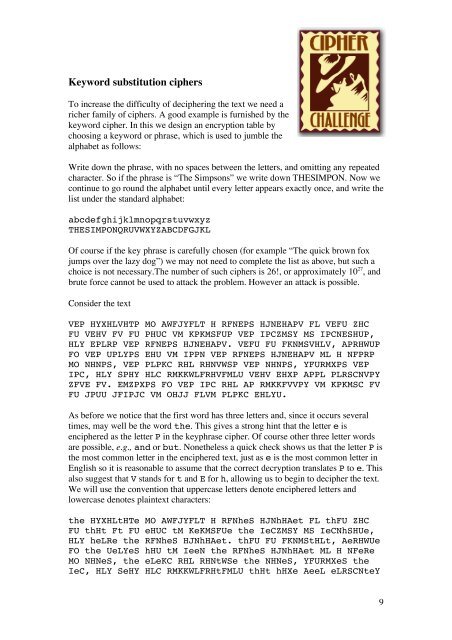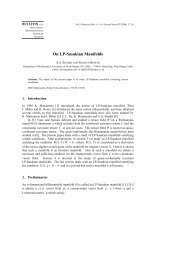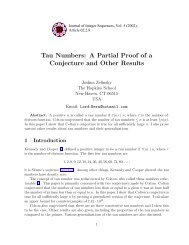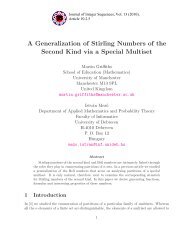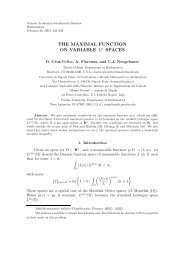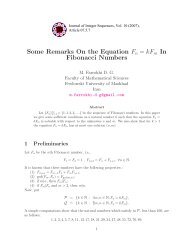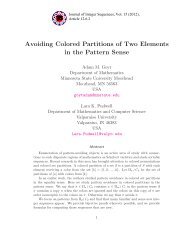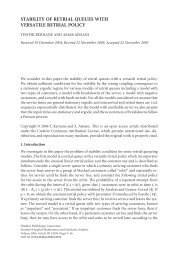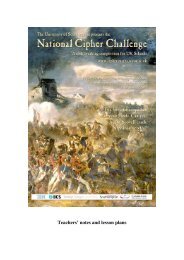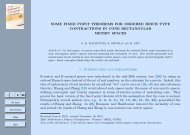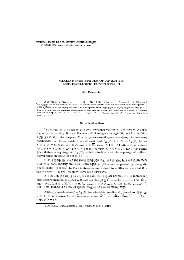Teachers - University of Southampton
Teachers - University of Southampton
Teachers - University of Southampton
Create successful ePaper yourself
Turn your PDF publications into a flip-book with our unique Google optimized e-Paper software.
Keyword substitution ciphers<br />
To increase the difficulty <strong>of</strong> deciphering the text we need a<br />
richer family <strong>of</strong> ciphers. A good example is furnished by the<br />
keyword cipher. In this we design an encryption table by<br />
choosing a keyword or phrase, which is used to jumble the<br />
alphabet as follows:<br />
Write down the phrase, with no spaces between the letters, and omitting any repeated<br />
character. So if the phrase is “The Simpsons” we write down THESIMPON. Now we<br />
continue to go round the alphabet until every letter appears exactly once, and write the<br />
list under the standard alphabet:<br />
abcdefghijklmnopqrstuvwxyz<br />
THESIMPONQRUVWXYZABCDFGJKL<br />
Of course if the key phrase is carefully chosen (for example “The quick brown fox<br />
jumps over the lazy dog”) we may not need to complete the list as above, but such a<br />
choice is not necessary.The number <strong>of</strong> such ciphers is 26!, or approximately 10 27 , and<br />
brute force cannot be used to attack the problem. However an attack is possible.<br />
Consider the text<br />
VEP HYXHLVHTP MO AWFJYFLT H RFNEPS HJNEHAPV FL VEFU ZHC<br />
FU VEHV FV FU PHUC VM KPKMSFUP VEP IPCZMSY MS IPCNESHUP,<br />
HLY EPLRP VEP RFNEPS HJNEHAPV. VEFU FU FKNMSVHLV, APRHWUP<br />
FO VEP UPLYPS EHU VM IPPN VEP RFNEPS HJNEHAPV ML H NFPRP<br />
MO NHNPS, VEP PLPKC RHL RHNVWSP VEP NHNPS, YFURMXPS VEP<br />
IPC, HLY SPHY HLC RMKKWLFRHVFMLU VEHV EHXP APPL PLRSCNVPY<br />
ZFVE FV. EMZPXPS FO VEP IPC RHL AP RMKKFVVPY VM KPKMSC FV<br />
FU JPUU JFIPJC VM OHJJ FLVM PLPKC EHLYU.<br />
As before we notice that the first word has three letters and, since it occurs several<br />
times, may well be the word the. This gives a strong hint that the letter e is<br />
enciphered as the letter P in the keyphrase cipher. Of course other three letter words<br />
are possible, e.g., and or but. Nonetheless a quick check shows us that the letter P is<br />
the most common letter in the enciphered text, just as e is the most common letter in<br />
English so it is reasonable to assume that the correct decryption translates P to e. This<br />
also suggest that V stands for t and E for h, allowing us to begin to decipher the text.<br />
We will use the convention that uppercase letters denote enciphered letters and<br />
lowercase denotes plaintext characters:<br />
the HYXHLtHTe MO AWFJYFLT H RFNheS HJNhHAet FL thFU ZHC<br />
FU thHt Ft FU eHUC tM KeKMSFUe the IeCZMSY MS IeCNhSHUe,<br />
HLY heLRe the RFNheS HJNhHAet. thFU FU FKNMStHLt, AeRHWUe<br />
FO the UeLYeS hHU tM IeeN the RFNheS HJNhHAet ML H NFeRe<br />
MO NHNeS, the eLeKC RHL RHNtWSe the NHNeS, YFURMXeS the<br />
IeC, HLY SeHY HLC RMKKWLFRHtFMLU thHt hHXe AeeL eLRSCNteY<br />
9


